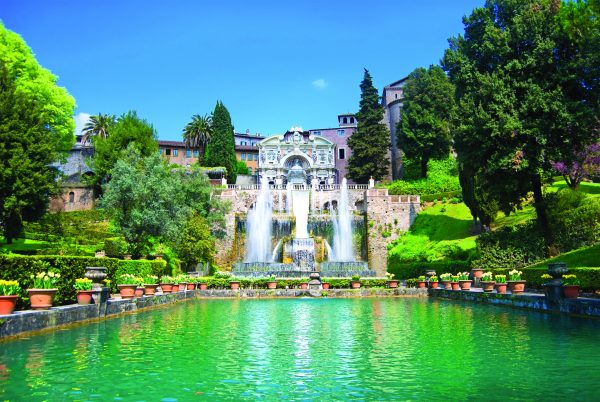The 16th-century Villa d’Este at Tivoli, a UNESCO World Heritage Site sits just outside Rome. The palace and gardens were created from a desire for status, yet a legacy that spans centuries has been left…

How does a newly declared governor of Tivoli ensure that an old monastic building befits his new political status? He turns it into a palace and accompanies it with sumptuous gardens adorned with some five hundred fountains, a spectacular feat of hydraulic engineering using the nearby River Aniene. So proud is he of these gardens that guests don’t enter the villa by a grand front door as you might expect, but instead wind their way through the terraced hillside gardens, which are choreographed to ensure that each guest has ample opportunity to marvel at the water features, ornamental ponds and grottoes before they reach the palace.
Cardinal Ippolito II d’Este of Ferrara may have desired the ultimate status symbol of the 16th century, but the villa’s influence has had a far greater reach: not only was it influential in the development of gardens in Europe, but it is also considered to be one of Italy’s greatest examples of Renaissance culture.
Just a short journey from Rome, Villa d’Este at Tivoli is an escape from the bustle of the city. Visit the house, which is now a museum, and on the way amble through the alley of Cento Fontane, pause at the Fontana dell’Organo (the first fountain of its kind – a water-operated organ) and marvel at the wall of sound from Fontana di Nettuno with its cascading waterfall, elegant water features and forceful, geyser-like fountains. On a clear summer’s day, the sunlight catches the water jets, creating fleeting rainbows in a continuous dance, as it has done down through the centuries.
Enjoyed this article? Read more like it in our archive.
